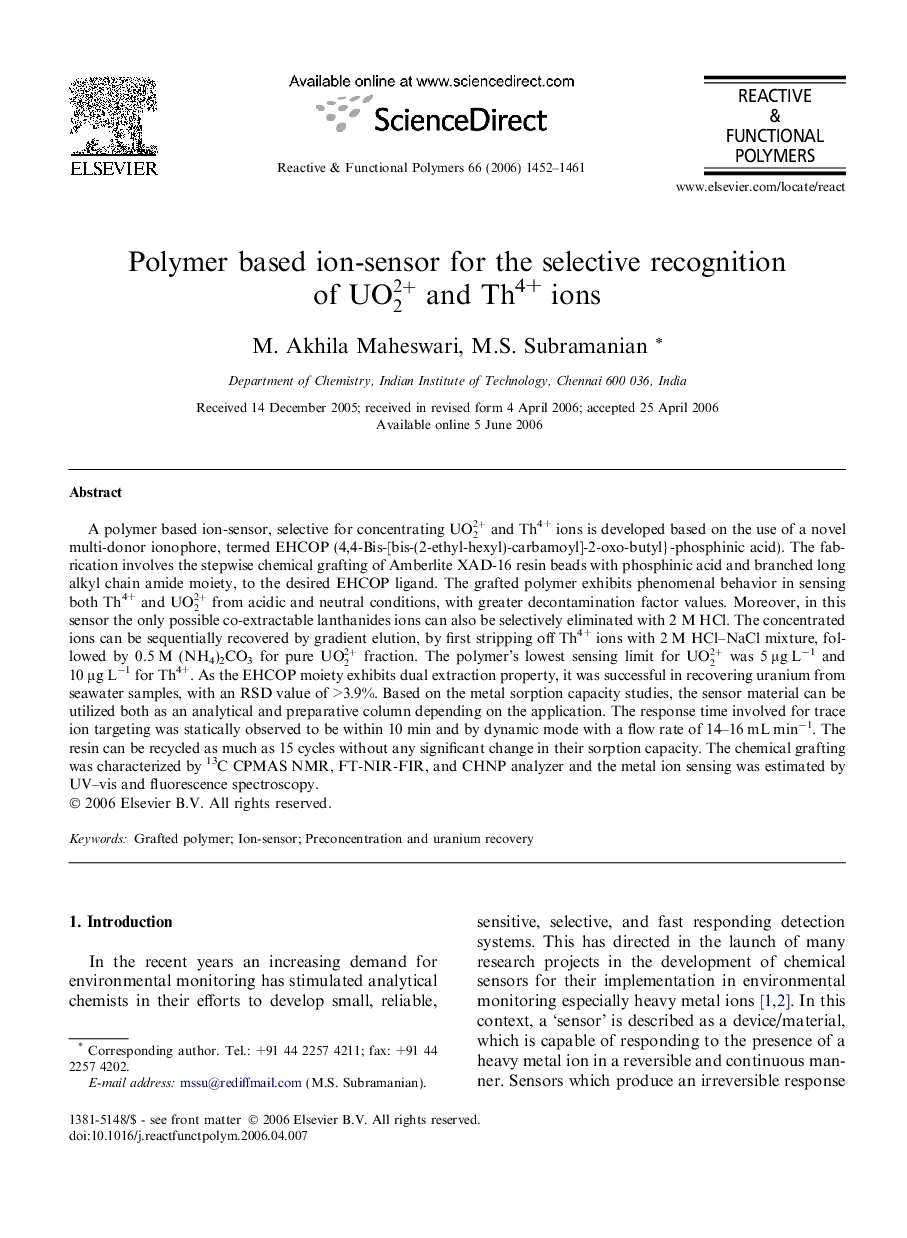| Article ID | Journal | Published Year | Pages | File Type |
|---|---|---|---|---|
| 5211483 | Reactive and Functional Polymers | 2006 | 10 Pages |
Abstract
A polymer based ion-sensor, selective for concentrating UO22+ and Th4+ ions is developed based on the use of a novel multi-donor ionophore, termed EHCOP (4,4-Bis-[bis-(2-ethyl-hexyl)-carbamoyl]-2-oxo-butyl}-phosphinic acid). The fabrication involves the stepwise chemical grafting of Amberlite XAD-16 resin beads with phosphinic acid and branched long alkyl chain amide moiety, to the desired EHCOP ligand. The grafted polymer exhibits phenomenal behavior in sensing both Th4+ and UO22+ from acidic and neutral conditions, with greater decontamination factor values. Moreover, in this sensor the only possible co-extractable lanthanides ions can also be selectively eliminated with 2 M HCl. The concentrated ions can be sequentially recovered by gradient elution, by first stripping off Th4+ ions with 2 M HCl-NaCl mixture, followed by 0.5 M (NH4)2CO3 for pure UO22+ fraction. The polymer's lowest sensing limit for UO22+ was 5 μg Lâ1 and 10 μg Lâ1 for Th4+. As the EHCOP moiety exhibits dual extraction property, it was successful in recovering uranium from seawater samples, with an RSD value of >3.9%. Based on the metal sorption capacity studies, the sensor material can be utilized both as an analytical and preparative column depending on the application. The response time involved for trace ion targeting was statically observed to be within 10 min and by dynamic mode with a flow rate of 14-16 mL minâ1. The resin can be recycled as much as 15 cycles without any significant change in their sorption capacity. The chemical grafting was characterized by 13C CPMAS NMR, FT-NIR-FIR, and CHNP analyzer and the metal ion sensing was estimated by UV-vis and fluorescence spectroscopy.
Keywords
Related Topics
Physical Sciences and Engineering
Chemistry
Organic Chemistry
Authors
M. Akhila Maheswari, M.S. Subramanian,
